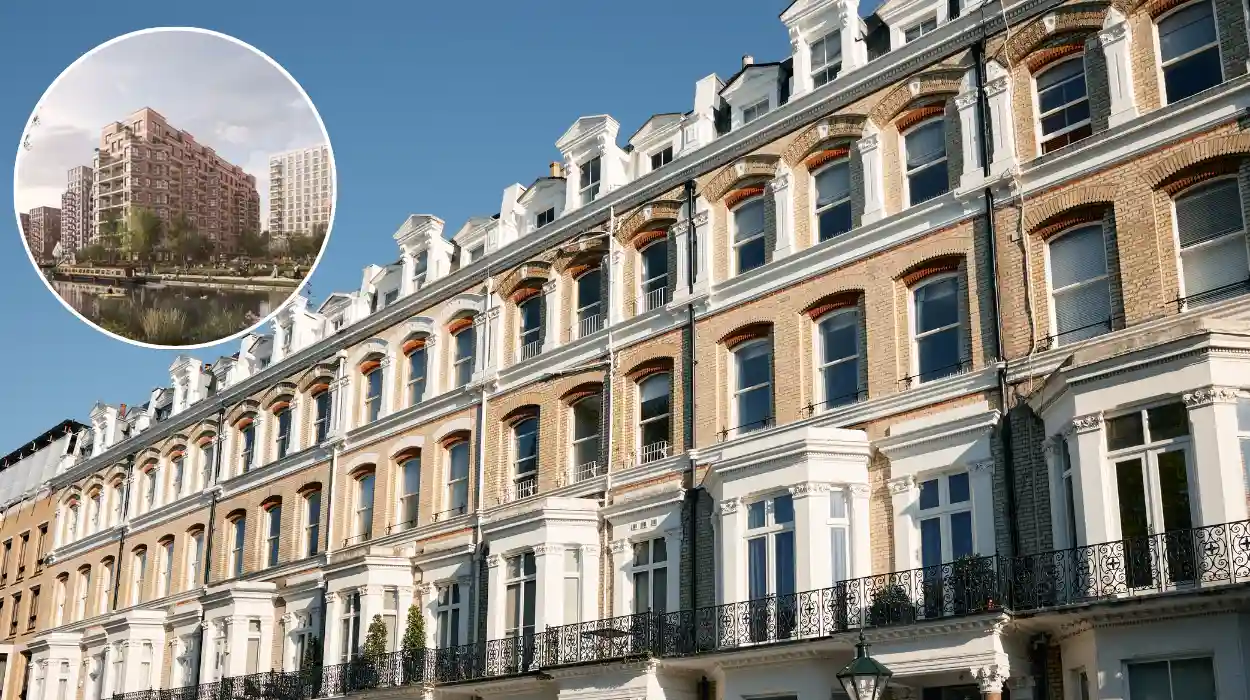Kensington and Chelsea (Parliament Politics Magazine) – Kensington and Chelsea councillors have approved plans to redevelop a former gasworks site into a 2,500-home complex, marking a major urban transformation.
Despite a strong effort by opponents, the majority of members present at yesterday night’s (November 11) Planning Committee vote in favor of the plan, which was jointly submitted by developer Ballymore and Sainsbury’s.
Sir Sadiq Khan, the mayor of London, will now have to decide whether to accept the council’s decision or submit it for his own review. The initiative “will be game changing not just for the people who’ll move here, but for thousands of Kensington and Chelsea residents in the wider community,” according to John Mulryan, Group Managing Director of Ballymore.
The Kensal Canalside Opportunity Area (KCOA), located on Canal Way, is intended to provide office space, a medical facility, a nursery or creche, eateries, a recreation center, a neighborhood center, a public park, and residences. 500 of the 2,519 units are to be “affordable,” with 158 at the middle rate and 342 at social rent.
Although far lower than the 35.7% cutoff, the council officials considered the figure to be the highest feasible. As the project develops, the figure will be reviewed.
An “outline” and comprehensive development plans make up this hybrid design, which enables choices to be made regarding the broad guidelines for the site’s construction. Currently, a Sainsbury’s, a gas station, a parking lot, a community center, and sixteen social housing units make up the abandoned gasworks site.
Planning documents show that there have been over 1,800 objections and 1,673 letters of support to the proposal. Opponents contend that the development’s size, with buildings up to 29 stories high, is concerning and that it lacks adequate transportation connections.
The amount of social housing that is suggested is also mentioned, along with cautions on “unresolved toxic risks” because the location is on an abandoned gasworks. The site is free from a municipal Community Infrastructure Levy because it is located in one of the 48 “Opportunity Areas” designated for redevelopment in London, although £21.9 million in community contributions must still be made to City Hall.
The loss of Canalside House, the community center, is another major source of discontent. According to documents, a portion of the office space would be offered at a discounted rate to compensate for the hub’s loss. The crowded room at last night’s meeting demonstrated the excitement in the idea, which one speaker claimed would be Kensington’s biggest development in 60 years.
Attendees were informed by independent councillor Toby Benton that members had been “quite strongly” petitioned by the applicants, something he claimed would not have been accessible to locals. He responded that he could make a decision “with an open mind” when Senior Planning Solicitor Lorna Bowry asked.
Among the objectors were several sitting councillors including the leader of the Labour opposition, Kasim Ali. He said:
“This council has said in the past that they will honour and listen and respect our members and our communities after Grenfell. It’s about time this council shows the leadership and not break its own rules and policies and listen once and for all to the local community.”
Councillors frequently questioned the applicants about the site’s contamination, while protestors warned that the applicants had not proven the area could be made safe. A member of the applicants’ team rejected this, stating that they have procedures and mitigations in place and that the site and contamination concerns are typical.
The applicants were also asked about the amount of affordable dwellings and the scheme’s sustainability. In particular, Cllr. Benton questioned the suggested level, which is much below the site’s council threshold.
Following the discussion, Cllr. Husband said that the quantity of houses was “very significant in the context of our borough and in the end the public benefit outweighed harms.”
Mr Mulryan said:
“We are pleased that the RBKC planning committee has given approval for our project at Kensal Canalside. This will be an exemplar project, showing how we can turn a complex, former gasworks into a thriving place full of character delivering over 2,500 much needed new homes.
Kensal Canalside will bring thousands of jobs, a new high street, leisure spaces – all of which will be game changing not just for the people who’ll move here, but for thousands of residents in the wider community.”
How will the development affect local schools and healthcare services?
The major West London development approved by Sadiq Khan, delivering 2,500 homes, is anticipated to have significant impacts on original seminaries and healthcare services due to the substantial increase in population.
For local seminaries, the development will probably increase demand for places in primary and secondary seminaries in the area. This could mean pressure on capacity, egging the need for planning benefactions from inventors to fund new or distended academy installations.
Regarding healthcare services, the development will also increase demand for GP surgeries, conventions, and community health services locally. The plan generally incorporates vittles or benefactions toward healthcare structure advancements, similar as expanded primary care installations or hookups with nearby hospitals to manage lesser case loads.


